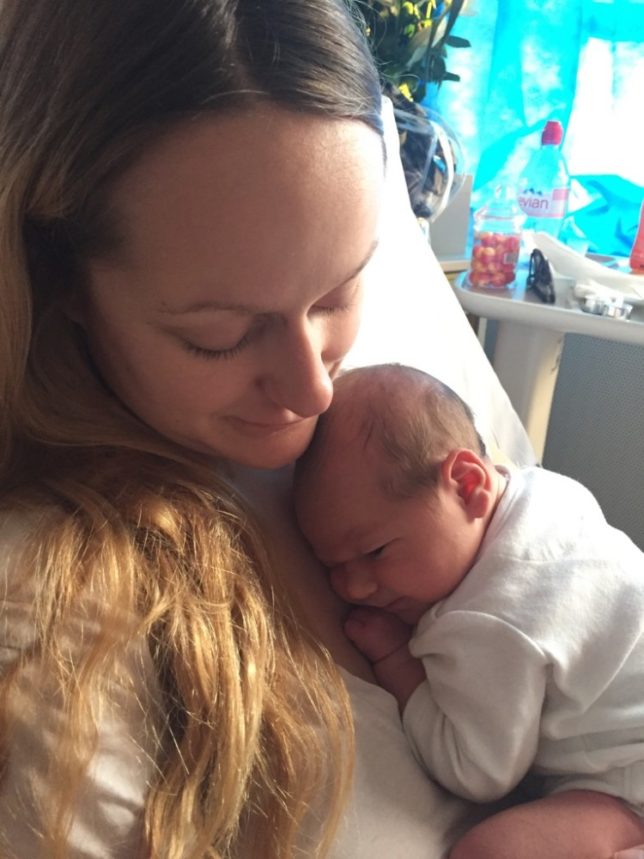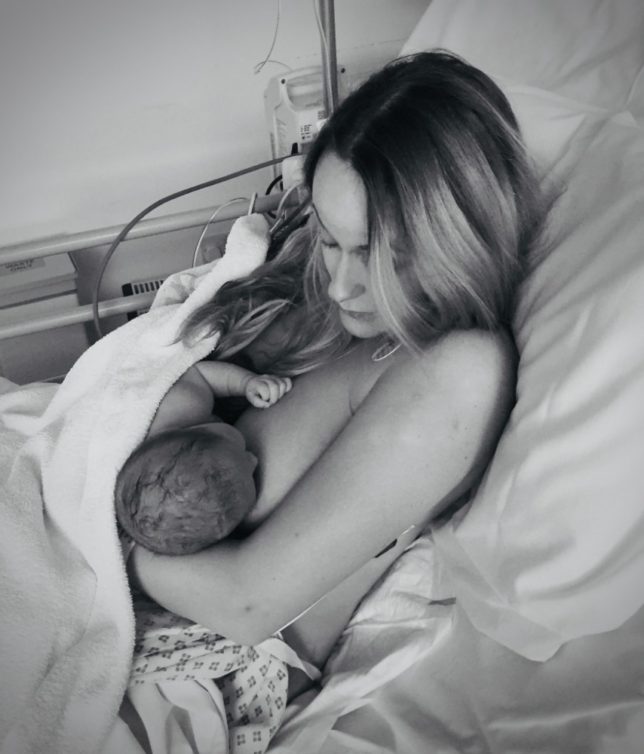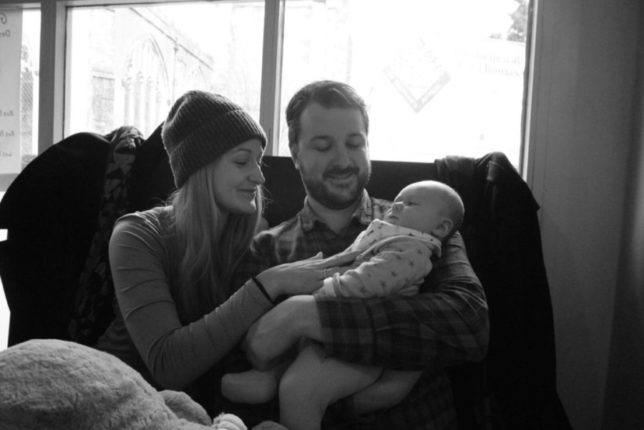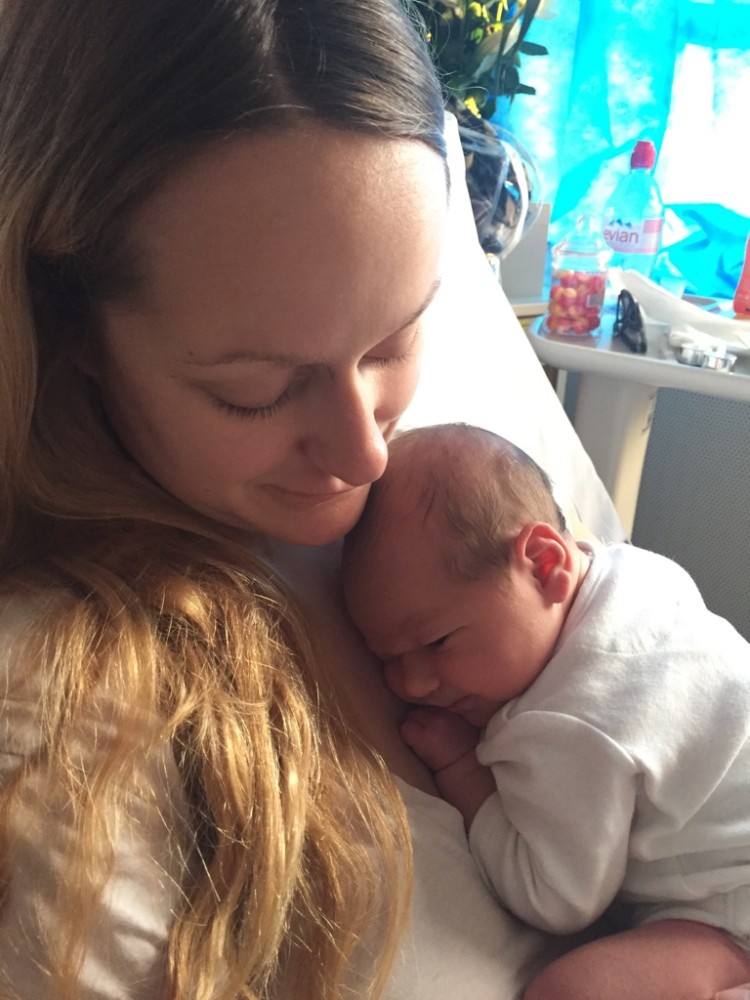Mindfulness during pregnancy isn’t a new concept in fact it’s been around for as long as women have been birthing. Giving birth was seen as a sacred practice for many years, with spiritual practices used for controlling the vibrations of the womb. This approach was thought to create healthy and enlightened relationships, where the male and female energies were balanced to create a blessed child.

So what does mindfulness actually mean and how can we continue to apply it to birth? It’s having an awareness of ourselves and what’s around us as well as being the first step in improving our mental well-being. By using hypnobirthing techniques, you can help yourself and birth partner approach birth with a more positive mindset.
After using these techniques during my own pregnancy, I was keen to share their benefits with other expectant women, so I started Bump and Mind hypnobirthing retreats. These luxury retreats give expectant parents an educational and relaxing babymoon before their bundle of joy. Here’s a list of things to be considered when mastering your mindset for childbirth…

Use your breath
Take a moment, get comfortable and sit in a position where you feel you can easily expand your lungs (this gets tougher as gestation increases). Take a long deep breath in through your nose, breathe in for 1…2…3… and now out through your mouth, calm and controlled. Choose a visualisation that works for you but think of something rising and expanding, like a hot air balloon inflating and rising up, or a full blooming rose lifting its head and opening its beautiful petals. Now close your eyes and repeat 3 times. This is called UP breathing and you should use this breath during the first stage of labour when you feel a surge (contraction). DOWN breathing is the breath used after transition in order to breathe your baby down the birth canal, similar to UP breathing however on the outward breath picture the air leaving your nostrils and racing down to your cervix aiding your baby further down with every breath. Use visualisations of waves running down over your body. It’s common to feel the need to make primal noises, do what your body is telling you and go with it.

Keep Positive
You can’t overdo this and I really can’t stress enough the importance of a positive outlook on birth. Watch any positive birth story you can find, join your local positive birth movement group. Tell your family and peers that you wish not to hear any negative stories about birth and invite them to tell you about positive and empowering births instead. Where the mind leads the body follows and you absolutely must keep a positive state of mind during birth.
There’s a scientific reason for this, feeling happy, loved, relaxed all releases oxytocin, the hormone that encourages the birth process. This can help you have a shorter, less painful and even orgasmic birth experience. Adrenaline is the opposite of oxytocin and the two don’t work well together, in fact you can’t naturally produce both hormones at the same time.
Back in our hunter gatherer days adrenaline was an incredible tool that birthing mothers would use if they spotted a predator or were somewhere they didn’t feel safe. The adrenaline would slow labour down allowing the mother to find a safer more comfortable place to settle back down and allow labour to resume. We can still see this in the animal kingdom today.
It’s important to recognise if this happens during labour. The most common times are just after a shift change or perhaps after some information you weren’t expecting. If we identify a shift in our behaviour, revert back to your breathing techniques to lower the adrenaline and increase oxytocin to regain confidence and control. The best person at noticing if the mood has shifted is the birth partner.
As we know things don’t always go to plan and while visualising your perfect birth is a big factor in achieving it, we need to think about how we can keep positive if a situation happens that we don’t want or don’t expect. Have a think about and include on your birth plan what you would like to happen in the event of things not going according to plan. Birth Partner’s being aware of these choices and being able to refer to them using the birth plan will take a huge weight off mum’s shoulders and means the care team won’t need to disturb her unless absolutely necessary.

Birth Partner
Your mum, husband or even doula, whoever your birth partner may be, they are there to assist you in this incredible journey your body is about to go through. In hypnobirthing the birth partner in an integral part of the process. They offer many things, but some of the most important being continuity of care, protector of the birth space and giver of affection.
We’re so lucky in the UK to have the NHS but with it comes guidelines that must be adhered to, processes that must be met and working hours that don’t reflect the length of a woman’s labour. Although the NHS tries where they can to have a consistent caregiver this can’t always be achieved. Home births more commonly see a midwife stay with mum for the duration however in MLU’s and OBU’s the staff change shift usually every 8 hours. The continuity of care from a birth partner is paramount in ensuring mum can completely relax, shut off her neocortex and allow the body to do what it is designed to do.
Gentle stroking of mums back, jaw or wherever feels good for mum in upwards then downwards circular movements with the back of the hand will help the release of oxytocin and relieve any discomfort in these areas. The birth partner can say out loud some positive affirmations at this point like ‘our baby is in the perfect position for birth’, or ‘with each surge our baby is moving closer to us’.

Prepare your Birth Space
In the weeks leading up to birth have positive affirmations dotted around your house, on the mirror, in the fridge or even on your bedside cabinet. Everywhere and anywhere you will see them. You can also make some bunting with your favourite affirmations.
Wherever you decide to give birth put some proper time and effort into organising what your birth space will look like. Remember if you feel comfortable and calm you will most likely have a more comfortable and calming experience. This is the perfect opportunity to set up your triggers which will help you to regain your control if you lose your way slightly. Triggers are smells, sounds and words that you know relax you. If there was a particular smell that calmed you during pregnancy have that around you, electric diffusers are allowed in most hospitals. Use LED tea lights to give the room a candle-lit hue. Absolutely anything goes here, make it your own and get creative.
About the expert
 Tahnee Knowles is a hypnobirthing teacher using the renowned KGH programme. KGH is a Royal College of Midwives accredited and the original UK Hypnobirthing course, which she now uses to teach regular hypnobirthing classes. Tahnee has also founded Bump and Mind which runs luxury hypnobirthing and pregnancy wellness retreats.
Tahnee Knowles is a hypnobirthing teacher using the renowned KGH programme. KGH is a Royal College of Midwives accredited and the original UK Hypnobirthing course, which she now uses to teach regular hypnobirthing classes. Tahnee has also founded Bump and Mind which runs luxury hypnobirthing and pregnancy wellness retreats.

